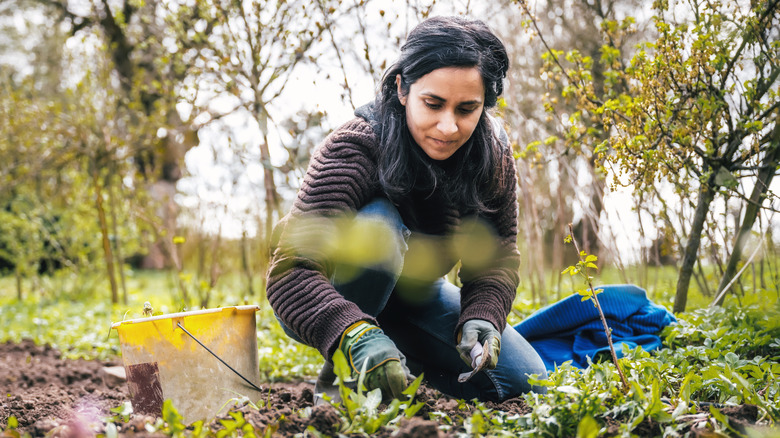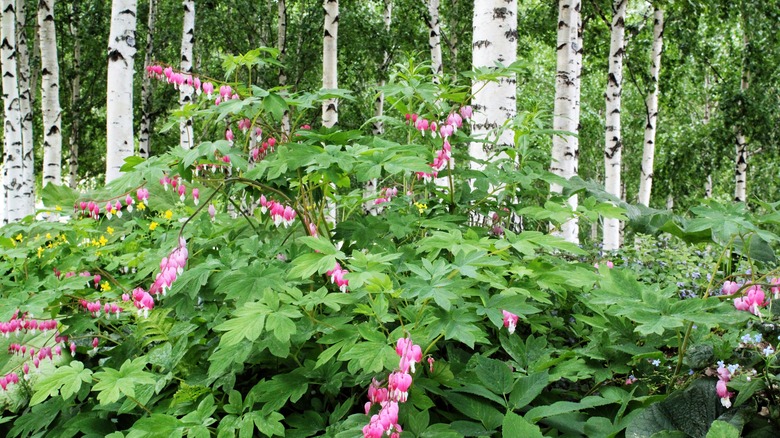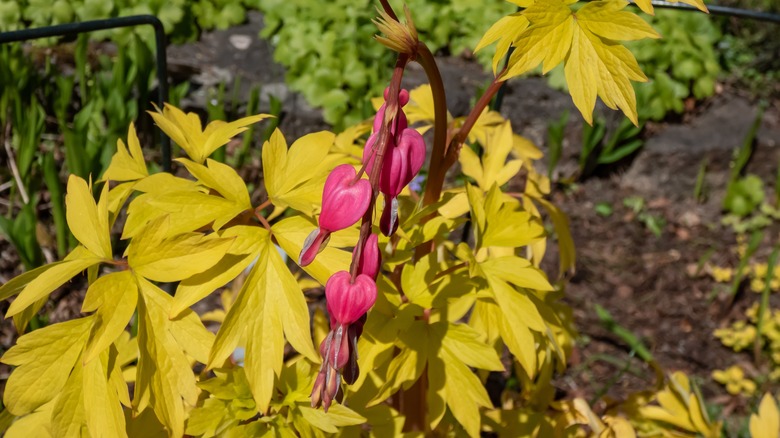The Problem With Growing This Heart-Shaped Flower (& How To Fix It)
Bleeding heart (Dicentra spectabilis) is a harbinger of the summer to come. In late spring, they fill gardens with dramatic curves and delightful heart-shaped flowers. These cool-weather plants don't typically love the heat of the summer, and will start to yellow and die back by mid-summer in warm climates. However, there's a problem with growing bleeding heart: yellowing leaves earlier in the season, which is a sign that you have another problem. There are a few potential culprits, but the most likely is too much sunlight.
Bleeding heart is a woodland plant that prefers to grow in light shade. In cooler climates, they may be able to handle full sun, but if you have prematurely yellow leaves on your bleeding heart, the first suspect should be the amount of light it's getting. If it is already in a shady spot, and you don't think that sun is the problem, too much water could be an issue. If your soil does not drain well, and you regularly see standing water near your bleeding heart, it might be overwatered. The good news is that both of these problems can be fixed.
What to do if your bleeding heart gets too much sun
Whether you put your bleeding heart in the wrong spot or the shade tree that was providing it some protection was damaged, you may need to consider moving it. If there's a shady spot in your yard where you think it will thrive, simply moving it is the easiest option. The best time to do this is at the first sign of sprouts in the early spring. If you have an older, established bleeding heart, the root ball may be significant so be prepared to do some digging. Don't worry if you end up separating the root ball. Dividing bleeding heart is a common practice, and it should recover well once in its preferred conditions.
If you don't already have a shady spot for your bleeding heart, consider creating one. You could plant trees or other tall plants nearby, but will want to consider how quickly they grow. Will this plant be able to provide some shade early in the spring, or will it only reach its full height in the summer? Well-positioned evergreen shrubs and trees will be sure to provide just enough shade.
What to do if your bleeding heart is overwatered
If the sun isn't what's giving your bleeding heart a hard time, water might be the problem. The first step to addressing this problem is thinking about your own watering habits. Once established, bleeding hearts tend to be self-sufficient, so unless you're having an unseasonably hot and dry spring, you probably don't need to water them. Add a layer of mulch to help hold in moisture if you're concerned about the soil drying out. Just remember to avoid this spring mulching mistake that can make it hard for some flowers to bloom.
If simply cutting back on watering them doesn't help, then you may need to think about the soil. Bleeding hearts prefer well-drained soil, so if yours is holding onto water, it's time to add some organic matter. Amending the soil with compost, or other organic matter like decaying leaves, is one way to successfully care for your bleeding heart. Do this in early spring as you may need to dig up the plant to fully amend the soil around it, and you want to give it a chance to get re-established before summer.


